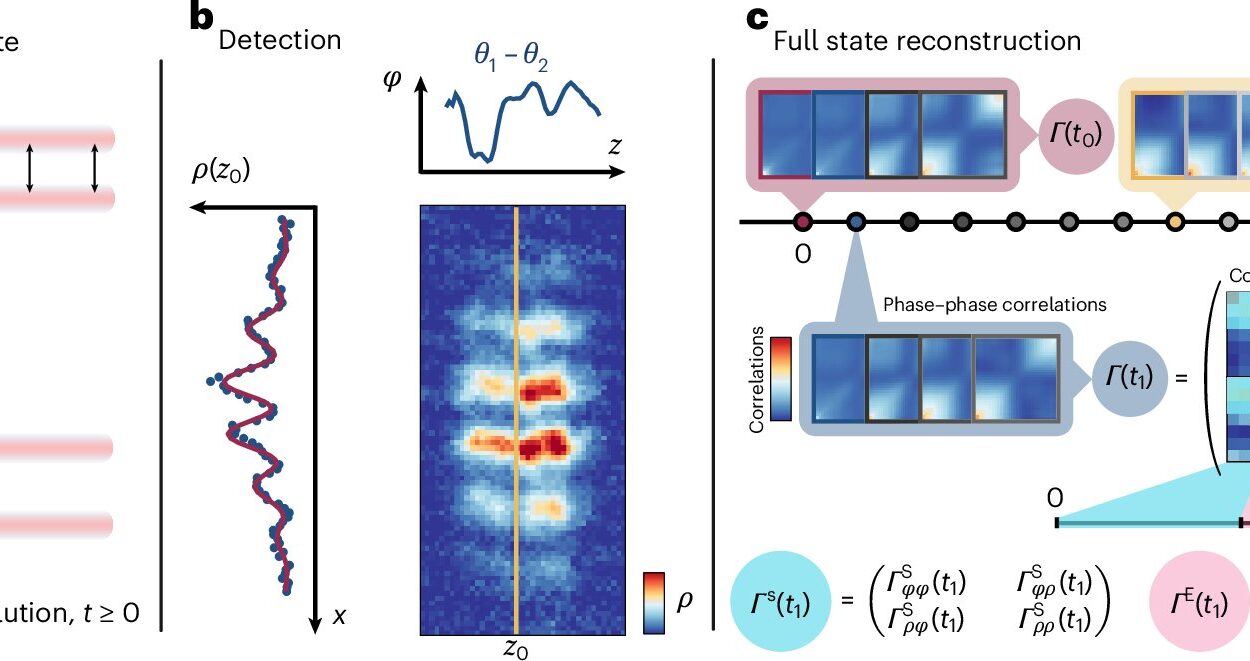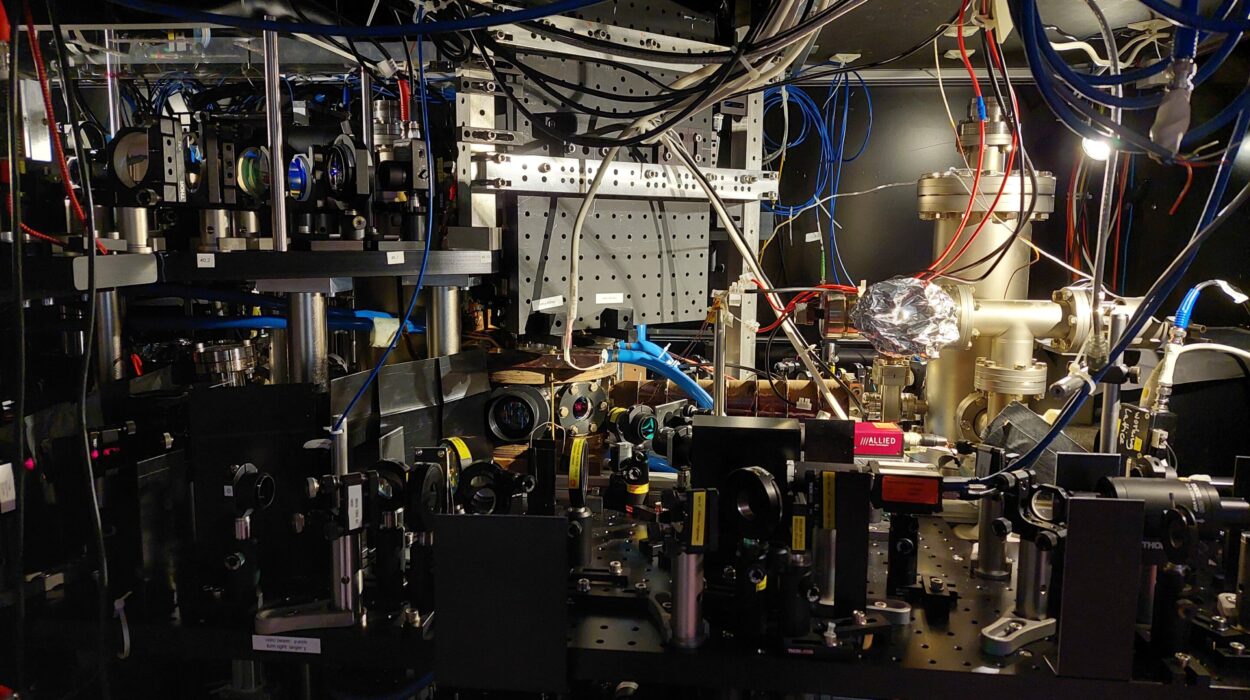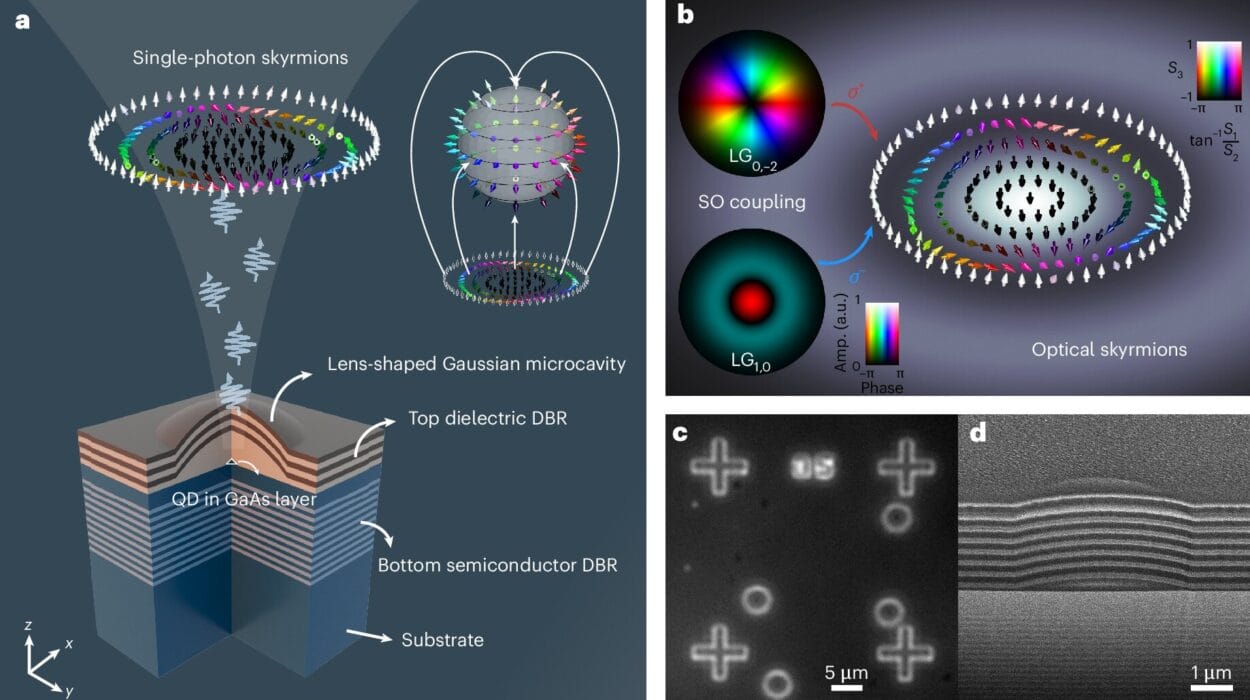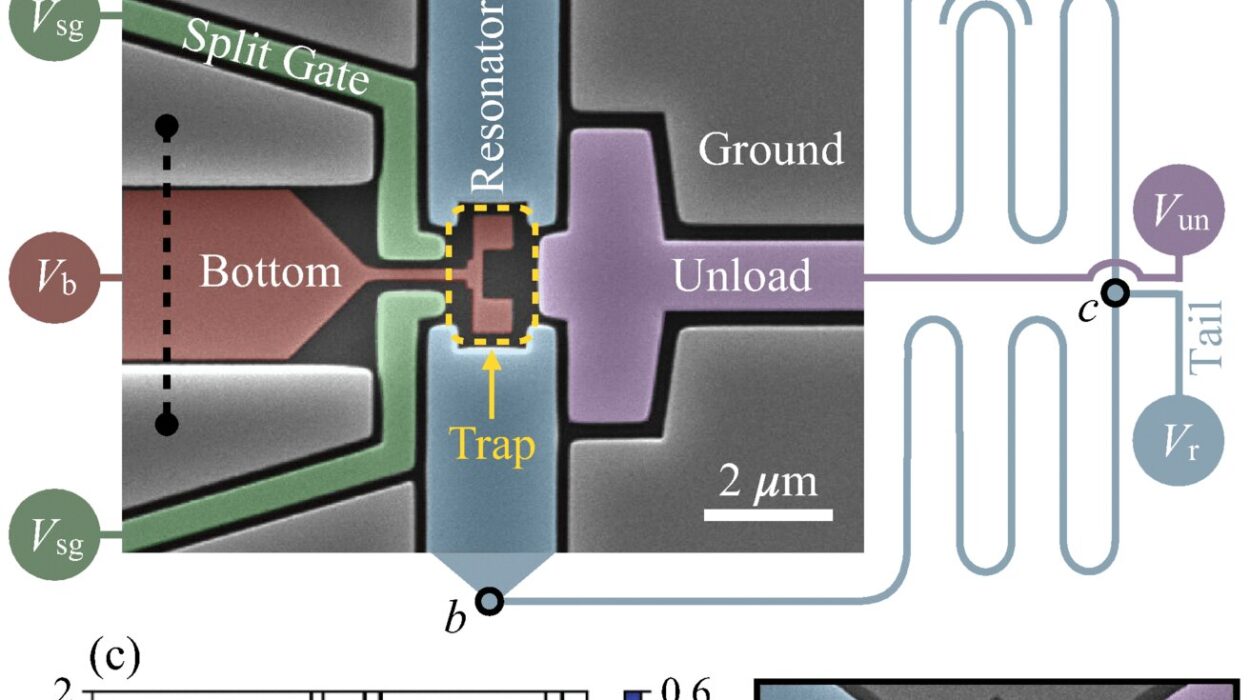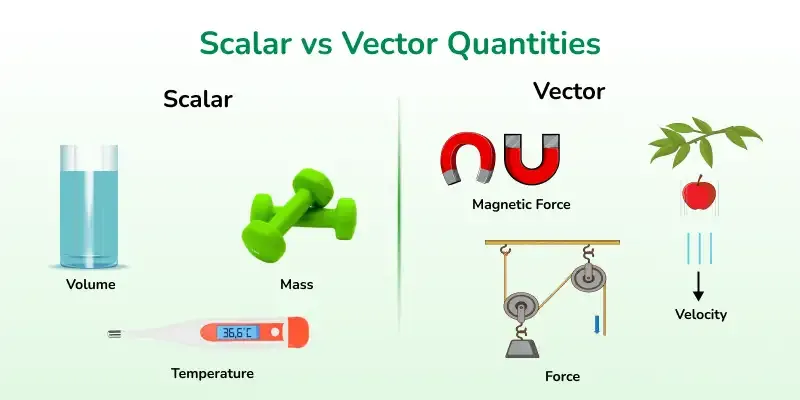Light has always been one of nature’s most elusive forces — dazzling, fast, and notoriously difficult to control. For decades, scientists in the field of nanophotonics have sought ways to harness it at unimaginably small scales, where structures just billionths of a meter across can trap and guide light for advanced technologies.
Now, a team of physicists led by Professor Andreas Tittl at Ludwig Maximilian University of Munich (LMU) has achieved something that researchers have dreamed about but never fully accomplished: they can switch light–matter interactions completely on or off in a fraction of a trillionth of a second.
The breakthrough, reported in Nature, could redefine the future of optical technologies, from lightning-fast internet communication to new frontiers in quantum research.
Why This Matters: The Dimmer Problem
Until now, controlling light in optical resonators — tiny devices that trap and amplify specific colors of light — was a bit like using a dimmer switch. You could brighten or dim the effect, or shift its color slightly, but you couldn’t truly make the interaction vanish. The resonators always stayed at least partially “lit,” coupled to the light in some way.
This new method changes that completely. The LMU-led team can start with a resonator that is truly invisible to light, create a bright resonance from nothing in just a few trillionths of a second, and then make it vanish again — with near-perfect precision.
The Hidden Power of Asymmetry
The secret lies in an ingenious form of metasurface engineering. Metasurfaces are ultrathin layers patterned with tiny nanostructures that can manipulate light in ways impossible for natural materials. In this study, the researchers designed each nanostructure as two tiny silicon rods sitting side by side — but with a twist.
Instead of making them identical, they deliberately gave each rod a slightly different shape. This subtle asymmetry meant that, at a certain wavelength, the optical effects of one rod perfectly canceled out the effects of the other. The result: the structure physically existed, but it was “invisible” to light at that wavelength. No resonance. No coupling. Just darkness.
Then came the real trick. By hitting only one of the rods with an ultrafast 200-femtosecond laser pulse — a burst of light so brief it makes a blink seem eternal — the researchers temporarily changed that rod’s optical properties. The perfect balance was disrupted, and suddenly the structure lit up with a strong resonance. The light had been “switched on.”
Controlling Light Like Never Before
“This is all about symmetry-breaking,” explains Professor Tittl. “We start with a perfect balance in an asymmetric structure. Then, by deliberately disturbing it in a controlled way, we gain unprecedented freedom over how light and matter interact. We can switch resonances on, off, sharpen them, broaden them — almost like tuning an instrument.”
In their experiments, the team showed four distinct feats:
- Generating a resonance from a completely dark state
- Quenching an existing resonance so it vanishes entirely
- Sharpening a resonance to make it more precise
- Broadening a resonance to make it more versatile
In one case, they improved the Q-factor — a measure of how sharp and high-quality a resonance is — by more than 150%.
Seeing the Switch in Real Time
Capturing such rapid events was no small challenge. The team relied on time-resolved spectroscopy, a technique that takes ultrafast “snapshots” of light–matter interactions as they unfold.
“Without this method, we’d never actually see what’s happening,” says Leonardo de S. Menezes, who led the spectroscopic work. “We were able to watch in real time as a resonance emerged within picoseconds and then faded again, with almost no unwanted energy loss. That’s the proof that our temporal symmetry-breaking works exactly as predicted.”
Opening New Doors in Physics and Technology
The implications of this discovery are far-reaching. The ability to switch resonances on and off at will could lead to low-loss optical switches that work purely with light, without the need for electrical components. This could supercharge telecommunications, data centers, and high-speed computing.
And the possibilities go beyond conventional technology. Because the method works with silicon but can be adapted to other materials, it might enable even faster switching speeds and open paths to controlling exotic states of matter — including time crystals, strange quantum systems that repeat their patterns in time rather than space.
“This is a paradigm shift for active nanophotonics,” Tittl says. “It’s not just about making devices better. It’s about giving ourselves a new level of control over the very building blocks of light–matter interaction.”
From Fundamental Science to Future Applications
For now, the work is still in the experimental stage, but it’s a striking example of how careful design at the nanoscale can rewrite the rules of physics. If integrated into real-world devices, such technology could pave the way for ultra-fast optical processors, next-generation sensors, and powerful quantum simulators.
By mastering symmetry and learning when to break it, the LMU team has shown that sometimes the path to innovation lies in the delicate art of imbalance — and in the power to restore that balance at the speed of light.
More information: Optical control of resonances in temporally symmetry-broken metasurfaces, Nature (2025). DOI: 10.1038/s41586-025-09363-7

